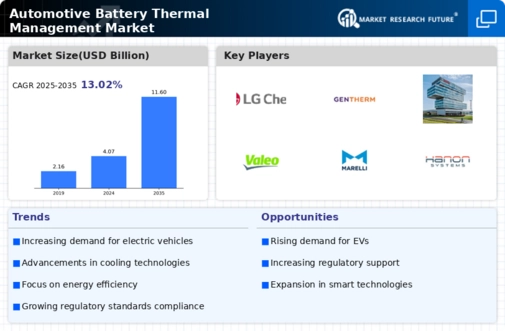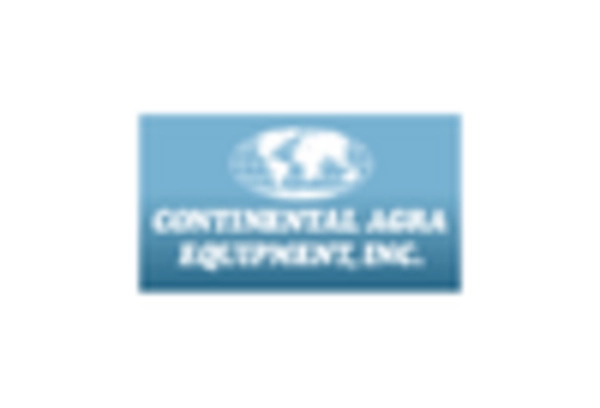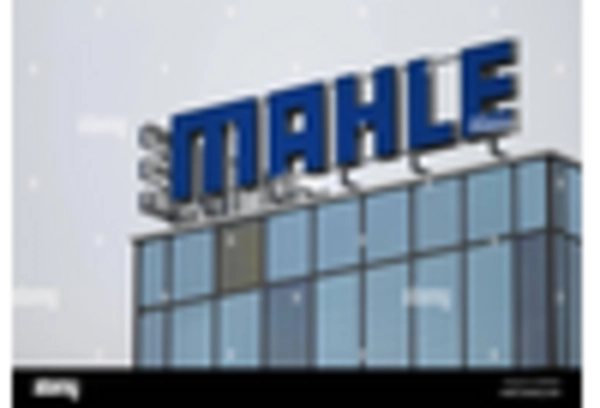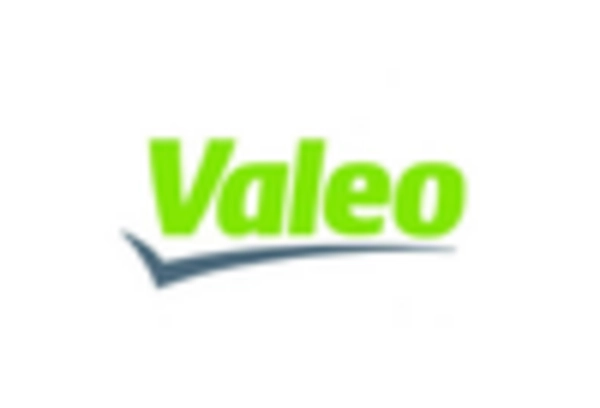-
EXECUTIVE SUMMARY
-
MARKET ATTRACTIVENESS ANALYSIS
-
1.1.1
-
GLOBAL AUTOMOTIVE BATTERY THERMAL MANAGEMENT SYSTEM MARKET, BY TECHNOLOGY
-
1.1.2
-
GLOBAL AUTOMOTIVE BATTERY THERMAL MANAGEMENT SYSTEM MARKET, BY PROPULSION
-
1.1.3
-
GLOBAL AUTOMOTIVE BATTERY THERMAL MANAGEMENT SYSTEM MARKET, BY VEHICLE TYPE
-
1.1.4
-
GLOBAL AUTOMOTIVE BATTERY THERMAL MANAGEMENT SYSTEM MARKET, BY REGION
-
2
-
MARKET INTRODUCTION
-
DEFINITION
-
SCOPE OF THE STUDY
-
MARKET
-
STRUCTURE
-
RESEARCH METHODOLOGY
-
RESEARCH PROCESS
-
PRIMARY RESEARCH
-
3.3
-
SECONDARY RESEARCH
-
MARKET SIZE ESTIMATION
-
TOP-DOWN AND BOTTOM-UP APPROACH
-
3.6
-
FORECAST MODEL
-
LIST OF ASSUMPTIONS
-
MARKET DYNAMICS
-
INTRODUCTION
- INCREASE IN DEMAND FOR ELECTRIC VEHICLES
- INCREASING FUEL PRICES
- DRIVERS IMPACT ANALYSIS
-
4.2
-
DRIVERS
-
4.2.3
-
GOVERNMENT INITIATIVES
-
RESTRAINTS
- DEMAND
- HIGH PRICE AND LIMITED CAPACITY OF BATTERIES
-
FOR CNG AND LPG VEHICLES
-
4.3.3
-
RESTRAINTS IMPACT ANALYSIS
-
OPPORTUNITIES
- INCREASING ADOPTION IN EMERGING
-
ECONOMIES
-
COVID-19 IMPACT ANALYSIS
- ECONOMIC IMPACT ON AUTOMOTIVE INDUSTRY
- IMPACT ON AUTOMOTIVE BATTERY THERMAL
-
4.5.2
-
IMPACT ON AUTOMOTIVE PRODUCTION
-
4.5.2.3
-
FCA
-
MANAGEMENT SYSTEM MARKET
-
FLOW CONSTRAINTS
-
IMPACT ON SUPPLY CHAIN
-
CASH
-
IMPACT ON WORLD TRADE
-
MARKET FACTOR ANALYSIS
-
5.1
-
PORTER’S FIVE FORCES MODEL
-
5.1.3
-
THREAT OF SUBSTITUTES
-
5.2
-
THREAT OF NEW ENTRANTS
-
BARGAINING POWER OF SUPPLIERS
-
BARGAINING POWER OF BUYERS
-
INTENSITY OF RIVALRY
-
SUPPLY CHAIN ANALYSIS
-
5.2.3
-
MANUFACTURE
-
DESIGN & DEVELOPMENT
-
RAW MATERIAL/COMPONENT SUPPLY
-
DISTRIBUTION/SUPPLY
-
END USE
-
GLOBAL AUTOMOTIVE
-
BATTERY THERMAL MANAGEMENT SYSTEM MARKET, BY TECHNOLOGY
-
OVERVIEW
-
AIR
-
6.3
-
LIQUID
-
PHASE CHANGE MATERIAL
-
THERMO ELECTRICS
-
GLOBAL AUTOMOTIVE
-
BATTERY THERMAL MANAGEMENT SYSTEM MARKET, BY PROPULSION
-
OVERVIEW
-
BATTERY
-
ELECTRIC VEHICLES
-
HYBRID ELECTRIC VEHICLES
-
PLUG-IN HYBRID ELECTRIC VEHICLES
-
7.5
-
FUEL CELL VEHICLE
-
GLOBAL AUTOMOTIVE BATTERY THERMAL MANAGEMENT SYSTEM MARKET,
-
BY VEHICLE TYPE
-
OVERVIEW
-
PASSENGER CAR
-
COMMERCIAL VEHICLE
-
9
-
GLOBAL AUTOMOTIVE BATTERY THERMAL MANAGEMENT SYSTEM MARKET, BY REGION
-
9.1
-
OVERVIEW
-
NORTH AMERICA
- US
- CANADA
- MEXICO
-
EUROPE
- UK
- FRANCE
- ITALY
- REST OF EUROPE
- CHINA
- JAPAN
- INDIA
- REST
-
9.3.1
-
GERMANY
-
9.4
-
ASIA-PACIFIC
-
OF ASIA-PACIFIC
-
SOUTH AMERICA
- BRAZIL
- ARGENTINA
- REST
-
OF SOUTH AMERICA
-
MIDDLE EAST & AFRICA
-
COMPETITIVE LANDSCAPE
-
10.1
-
COMPETITIVE OVERVIEW
-
MAJOR GROWTH STRATEGY IN THE GLOBAL AUTOMOTIVE BATTERY
-
THERMAL MANAGEMENT SYSTEM MARKET
-
COMPETITIVE BENCHMARKING
-
KEY DEVELOPMENTS
-
IN THE GLOBAL AUTOMOTIVE BATTERY THERMAL MANAGEMENT SYSTEM MARKET
-
DEVELOPMENTS: MERGERS & ACQUISITIONS
-
& COLLABORATIONS
-
DEVELOPMENTS/LAUNCHES
-
KEY
-
KEY DEVELOPMENTS: PARTNERSHIPS
-
KEY DEVELOPMENTS: EXPANSIONS
-
KEY DEVELOPMENTS: PRODUCT
-
COMPANY PROFILES
-
CONTINENTAL AG
- COMPANY
- FINANCIAL OVERVIEW
- PRODUCTS OFFERED
- KEY
- SWOT ANALYSIS
- KEY STRATEGY
-
OVERVIEW
-
DEVELOPMENTS
-
ROBERT
- COMPANY OVERVIEW
- FINANCIAL OVERVIEW
- PRODUCTS/SOLUTIONS/SERVICES
- KEY DEVELOPMENTS
- SWOT ANALYSIS
- KEY STRATEGIES
- COMPANY OVERVIEW
- FINANCIAL OVERVIEW
- KEY DEVELOPMENTS
- SWOT ANALYSIS
-
BOSCH GMBH
-
OFFERED
-
11.3
-
HANON SYSTEMS
-
11.3.3
-
PRODUCTS OFFERED
-
11.3.6
-
KEY STRATEGIES
-
LG CHEM
- FINANCIAL OVERVIEW
- PRODUCTS OFFERED
-
11.4.3
-
KEY DEVELOPMENTS
-
GENTHERM
- COMPANY OVERVIEW
- FINANCIAL OVERVIEW
- KEY DEVELOPMENTS
-
11.5.3
-
PRODUCTS OFFERED
-
VALEO
- COMPANY OVERVIEW
- PRODUCTS OFFERED
- KEY DEVELOPMENTS
- COMPANY OVERVIEW
- FINANCIAL OVERVIEW
- KEY DEVELOPMENTS
-
11.6.2
-
FINANCIAL OVERVIEW
-
11.7
-
MARELLI CORPORATION
-
11.7.3
-
PRODUCTS OFFERED
-
DANA LIMITED
- COMPANY
- FINANCIAL OVERVIEW
- PRODUCTS OFFERED
- KEY
-
OVERVIEW
-
DEVELOPMENTS
-
SAMSUNG SDI CO., LTD.
- COMPANY OVERVIEW
- PRODUCTS/SOLUTIONS/SERVICES OFFERED
- KEY
-
11.9.2
-
FINANCIAL OVERVIEW
-
DEVELOPMENTS
-
MAHLE GMBH
- COMPANY OVERVIEW
- FINANCIAL
- PRODUCTS/SOLUTIONS/SERVICES OFFERED
- KEY DEVELOPMENTS
- COMPANY OVERVIEW
- FINANCIAL OVERVIEW
- KEY DEVELOPMENTS
-
OVERVIEW
-
11.11
-
VOSS AUTOMOTIVE GMBH
-
11.11.3
-
PRODUCTS OFFERED
-
APPENDIX
-
DATA
-
SOURCES
-
-
LIST OF TABLES
-
LIST OF ASSUMPTIONS 27
-
TABLE
-
GLOBAL AUTOMOTIVE BATTERY THERMAL MANAGEMENT SYSTEM MARKET ESTIMATES & FORECAST,
-
BY TECHNOLOGY, 2022–2030 (USD MILLION) 41
-
GLOBAL AUTOMOTIVE BATTERY
-
THERMAL MANAGEMENT SYSTEM MARKET ESTIMATES & FORECAST, BY PROPULSION, 2022–2030
-
(USD MILLION) 44
-
GLOBAL AUTOMOTIVE BATTERY THERMAL MANAGEMENT SYSTEM
-
MARKET ESTIMATES & FORECAST, BY VEHICLE TYPE, 2022–2030 (USD MILLION)
-
46
-
GLOBAL AUTOMOTIVE BATTERY THERMAL MANAGEMENT SYSTEM MARKET, BY
-
REGION, 2022–2030 (USD MILLION) 49
-
NORTH AMERICA: AUTOMOTIVE BATTERY
-
THERMAL MANAGEMENT SYSTEM MARKET, BY COUNTRY, 2022–2030 (USD MILLION) 50
-
TABLE
-
NORTH AMERICA: AUTOMOTIVE BATTERY THERMAL MANAGEMENT SYSTEM MARKET ESTIMATES &
-
FORECAST, BY TECHNOLOGY, 2022–2030 (USD MILLION) 50
-
NORTH AMERICA: AUTOMOTIVE
-
BATTERY THERMAL MANAGEMENT SYSTEM MARKET ESTIMATES & FORECAST, BY PROPULSION,
-
NORTH AMERICA: AUTOMOTIVE BATTERY THERMAL
-
MANAGEMENT SYSTEM MARKET ESTIMATES & FORECAST, BY VEHICLE TYPE, 2022–2030
-
(USD MILLION) 51
-
US: AUTOMOTIVE BATTERY THERMAL MANAGEMENT SYSTEM MARKET
-
ESTIMATES & FORECAST, BY TECHNOLOGY, 2022–2030 (USD MILLION) 52
-
TABLE
-
US: AUTOMOTIVE BATTERY THERMAL MANAGEMENT SYSTEM MARKET ESTIMATES & FORECAST,
-
BY PROPULSION, 2022–2030 (USD MILLION) 52
-
US: AUTOMOTIVE BATTERY
-
THERMAL MANAGEMENT SYSTEM MARKET ESTIMATES & FORECAST, BY VEHICLE TYPE, 2022–2030
-
(USD MILLION) 53
-
CANADA: AUTOMOTIVE BATTERY THERMAL MANAGEMENT SYSTEM
-
MARKET ESTIMATES & FORECAST, BY TECHNOLOGY, 2022–2030 (USD MILLION) 53
-
TABLE
-
CANADA: AUTOMOTIVE BATTERY THERMAL MANAGEMENT SYSTEM MARKET ESTIMATES & FORECAST,
-
BY PROPULSION, 2022–2030 (USD MILLION) 54
-
CANADA: AUTOMOTIVE BATTERY
-
THERMAL MANAGEMENT SYSTEM MARKET ESTIMATES & FORECAST, BY VEHICLE TYPE, 2022–2030
-
(USD MILLION) 54
-
MEXICO: AUTOMOTIVE BATTERY THERMAL MANAGEMENT SYSTEM
-
MARKET ESTIMATES & FORECAST, BY TECHNOLOGY, 2022–2030 (USD MILLION) 55
-
TABLE
-
MEXICO: AUTOMOTIVE BATTERY THERMAL MANAGEMENT SYSTEM MARKET ESTIMATES & FORECAST,
-
BY PROPULSION, 2022–2030 (USD MILLION) 55
-
MEXICO: AUTOMOTIVE BATTERY
-
THERMAL MANAGEMENT SYSTEM MARKET ESTIMATES & FORECAST, BY VEHICLE TYPE, 2022–2030
-
(USD MILLION) 56
-
EUROPE: AUTOMOTIVE BATTERY THERMAL MANAGEMENT SYSTEM
-
MARKET, BY COUNTRY, 2022–2030 (USD MILLION) 57
-
EUROPE: AUTOMOTIVE BATTERY
-
THERMAL MANAGEMENT SYSTEM MARKET ESTIMATES & FORECAST, BY TECHNOLOGY, 2022–2030
-
(USD MILLION) 58
-
EUROPE: AUTOMOTIVE BATTERY THERMAL MANAGEMENT SYSTEM
-
MARKET ESTIMATES & FORECAST, BY PROPULSION, 2022–2030 (USD MILLION) 58
-
TABLE
-
EUROPE: AUTOMOTIVE BATTERY THERMAL MANAGEMENT SYSTEM MARKET ESTIMATES & FORECAST,
-
BY VEHICLE TYPE, 2022–2030 (USD MILLION) 59
-
GERMANY: AUTOMOTIVE BATTERY
-
THERMAL MANAGEMENT SYSTEM MARKET ESTIMATES & FORECAST, BY TECHNOLOGY, 2022–2030
-
(USD MILLION) 59
-
GERMANY: AUTOMOTIVE BATTERY THERMAL MANAGEMENT SYSTEM
-
MARKET ESTIMATES & FORECAST, BY PROPULSION, 2022–2030 (USD MILLION) 60
-
TABLE
-
GERMANY: AUTOMOTIVE BATTERY THERMAL MANAGEMENT SYSTEM MARKET ESTIMATES &
-
FORECAST, BY VEHICLE TYPE, 2022–2030 (USD MILLION) 60
-
UK: AUTOMOTIVE BATTERY
-
THERMAL MANAGEMENT SYSTEM MARKET ESTIMATES & FORECAST, BY TECHNOLOGY, 2022–2030
-
(USD MILLION) 61
-
UK: AUTOMOTIVE BATTERY THERMAL MANAGEMENT SYSTEM MARKET
-
ESTIMATES & FORECAST, BY PROPULSION, 2022–2030 (USD MILLION) 61
-
TABLE
-
UK: AUTOMOTIVE BATTERY THERMAL MANAGEMENT SYSTEM MARKET ESTIMATES & FORECAST,
-
BY VEHICLE TYPE, 2022–2030 (USD MILLION) 62
-
FRANCE: AUTOMOTIVE BATTERY
-
THERMAL MANAGEMENT SYSTEM MARKET ESTIMATES & FORECAST, BY TECHNOLOGY, 2022–2030
-
(USD MILLION) 62
-
FRANCE: AUTOMOTIVE BATTERY THERMAL MANAGEMENT SYSTEM
-
MARKET ESTIMATES & FORECAST, BY PROPULSION, 2022–2030 (USD MILLION) 63
-
TABLE
-
FRANCE: AUTOMOTIVE BATTERY THERMAL MANAGEMENT SYSTEM MARKET ESTIMATES & FORECAST,
-
BY VEHICLE TYPE, 2022–2030 (USD MILLION) 63
-
ITALY: AUTOMOTIVE BATTERY
-
THERMAL MANAGEMENT SYSTEM MARKET ESTIMATES & FORECAST, BY TECHNOLOGY, 2022–2030
-
(USD MILLION) 64
-
ITALY: AUTOMOTIVE BATTERY THERMAL MANAGEMENT SYSTEM
-
MARKET ESTIMATES & FORECAST, BY PROPULSION, 2022–2030 (USD MILLION) 64
-
TABLE
-
ITALY: AUTOMOTIVE BATTERY THERMAL MANAGEMENT SYSTEM MARKET ESTIMATES & FORECAST,
-
BY VEHICLE TYPE, 2022–2030 (USD MILLION) 65
-
REST OF EUROPE: AUTOMOTIVE
-
BATTERY THERMAL MANAGEMENT SYSTEM MARKET ESTIMATES & FORECAST, BY TECHNOLOGY,
-
REST OF EUROPE: AUTOMOTIVE BATTERY THERMAL
-
MANAGEMENT SYSTEM MARKET ESTIMATES & FORECAST, BY PROPULSION, 2022–2030
-
(USD MILLION) 66
-
REST OF EUROPE: AUTOMOTIVE BATTERY THERMAL MANAGEMENT
-
SYSTEM MARKET ESTIMATES & FORECAST, BY VEHICLE TYPE, 2022–2030 (USD MILLION)
-
66
-
ASIA-PACIFIC: AUTOMOTIVE BATTERY THERMAL MANAGEMENT SYSTEM MARKET,
-
BY COUNTRY, 2022–2030 (USD MILLION) 67
-
ASIA-PACIFIC: AUTOMOTIVE
-
BATTERY THERMAL MANAGEMENT SYSTEM MARKET ESTIMATES & FORECAST, BY TECHNOLOGY,
-
ASIA-PACIFIC: AUTOMOTIVE BATTERY THERMAL
-
MANAGEMENT SYSTEM MARKET ESTIMATES & FORECAST, BY PROPULSION, 2022–2030
-
(USD MILLION) 68
-
ASIA-PACIFIC: AUTOMOTIVE BATTERY THERMAL MANAGEMENT
-
SYSTEM MARKET ESTIMATES & FORECAST, BY VEHICLE TYPE, 2022–2030 (USD MILLION)
-
69
-
CHINA: AUTOMOTIVE BATTERY THERMAL MANAGEMENT SYSTEM MARKET ESTIMATES
-
& FORECAST, BY TECHNOLOGY, 2022–2030 (USD MILLION) 69
-
CHINA:
-
AUTOMOTIVE BATTERY THERMAL MANAGEMENT SYSTEM MARKET ESTIMATES & FORECAST, BY
-
PROPULSION, 2022–2030 (USD MILLION) 70
-
CHINA: AUTOMOTIVE BATTERY
-
THERMAL MANAGEMENT SYSTEM MARKET ESTIMATES & FORECAST, BY VEHICLE TYPE, 2022–2030
-
(USD MILLION) 70
-
JAPAN: AUTOMOTIVE BATTERY THERMAL MANAGEMENT SYSTEM
-
MARKET ESTIMATES & FORECAST, BY TECHNOLOGY, 2022–2030 (USD MILLION) 71
-
TABLE
-
JAPAN: AUTOMOTIVE BATTERY THERMAL MANAGEMENT SYSTEM MARKET ESTIMATES & FORECAST,
-
BY PROPULSION, 2022–2030 (USD MILLION) 71
-
JAPAN: AUTOMOTIVE BATTERY
-
THERMAL MANAGEMENT SYSTEM MARKET ESTIMATES & FORECAST, BY VEHICLE TYPE, 2022–2030
-
(USD MILLION) 72
-
INDIA: AUTOMOTIVE BATTERY THERMAL MANAGEMENT SYSTEM
-
MARKET ESTIMATES & FORECAST, BY TECHNOLOGY, 2022–2030 (USD MILLION) 72
-
TABLE
-
INDIA: AUTOMOTIVE BATTERY THERMAL MANAGEMENT SYSTEM MARKET ESTIMATES & FORECAST,
-
BY PROPULSION, 2022–2030 (USD MILLION) 73
-
INDIA: AUTOMOTIVE BATTERY
-
THERMAL MANAGEMENT SYSTEM MARKET ESTIMATES & FORECAST, BY VEHICLE TYPE, 2022–2030
-
(USD MILLION) 73
-
REST OF ASIA-PACIFC: AUTOMOTIVE BATTERY THERMAL MANAGEMENT
-
SYSTEM MARKET ESTIMATES & FORECAST, BY TECHNOLOGY, 2022–2030 (USD MILLION)
-
74
-
REST OF ASIA-PACIFC: AUTOMOTIVE BATTERY THERMAL MANAGEMENT SYSTEM
-
MARKET ESTIMATES & FORECAST, BY PROPULSION, 2022–2030 (USD MILLION) 74
-
TABLE
-
REST OF ASIA-PACIFC: AUTOMOTIVE BATTERY THERMAL MANAGEMENT SYSTEM MARKET ESTIMATES
-
& FORECAST, BY VEHICLE TYPE, 2022–2030 (USD MILLION) 75
-
SOUTH
-
AMERICA: AUTOMOTIVE BATTERY THERMAL MANAGEMENT SYSTEM MARKET, BY COUNTRY, 2022–2030
-
(USD MILLION) 76
-
SOUTH AMERICA: AUTOMOTIVE BATTERY THERMAL MANAGEMENT
-
SYSTEM MARKET ESTIMATES & FORECAST, BY TECHNOLOGY, 2022–2030 (USD MILLION)
-
76
-
SOUTH AMERICA: AUTOMOTIVE BATTERY THERMAL MANAGEMENT SYSTEM MARKET
-
ESTIMATES & FORECAST, BY PROPULSION, 2022–2030 (USD MILLION) 77
-
TABLE
-
SOUTH AMERICA: AUTOMOTIVE BATTERY THERMAL MANAGEMENT SYSTEM MARKET ESTIMATES
-
& FORECAST, BY VEHICLE TYPE, 2022–2030 (USD MILLION) 77
-
BRAZIL:
-
AUTOMOTIVE BATTERY THERMAL MANAGEMENT SYSTEM MARKET ESTIMATES & FORECAST, BY
-
TECHNOLOGY, 202










Leave a Comment